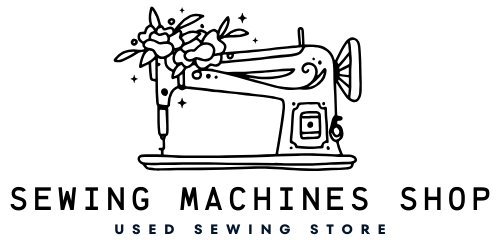
Introduction
So, you’re ready to buy a new sewing machine. Whether you’re a newbie or a seasoned sewer, the sheer number of options can be overwhelming. With so many features and models to choose from, how do you know which sewing machine is right for you? Don’t worry—I’m here to help you stitch together all the details.
Why Choosing the Right Sewing Machine Matters
Choosing the right sewing machine isn’t just about picking one with the most bells and whistles. It’s about finding a machine that fits your sewing style, skill level, and the types of projects you plan to tackle. Just like how a chef selects their knives with care, a sewer needs the right machine to bring their creative visions to life.
The Rise of Modern Sewing Machines
Gone are the days of manually cranking a sewing machine. Today’s machines are equipped with everything from computerized controls to automatic threading. These modern features can make sewing faster, easier, and more precise. But which of these features should you look for when making your purchase?
Key Features to Consider in a Sewing Machine
When you’re shopping at the Sewing Machine Shop, you’ll want to keep an eye out for certain features that can make or break your sewing experience. Let’s dive into the must-have features first.
Stitch Options
One of the first things you’ll notice when browsing sewing machines is the variety of stitch options available. But do you really need all those stitches?
Basic vs. Decorative Stitches
For beginners, basic stitches like straight and zigzag are essential. As you advance, decorative stitches can add flair to your projects. The key is finding a machine that offers a good balance between the two. Some machines at the Sewing Machine Shop come with a plethora of stitch options—so be sure to choose one that aligns with your sewing needs.
Adjustable Stitch Length and Width
The ability to adjust stitch length and width is crucial for versatility. Whether you’re hemming jeans or creating delicate lacework, being able to customize your stitches can make all the difference.
Automatic Buttonhole Function
Buttonholes can be a nightmare to sew manually. Thankfully, many modern machines come with an automatic buttonhole function. This feature allows you to create consistent, professional-looking buttonholes with just the push of a button. If you’re planning to sew garments, this feature is a must-have.
Built-in Needle Threader
If you’ve ever struggled to thread a needle, you’ll appreciate this feature. A built-in needle threader saves time and frustration, especially when working with fine threads or in low light. It’s a small feature, but it makes a big difference.
Speed Control
When it comes to speed, one size doesn’t fit all. Different projects require different sewing speeds.
Importance of Adjustable Speed for Different Projects
Adjustable speed control allows you to slow down for precision work, like sewing curves, or speed up for long, straight seams. This feature is particularly beneficial for beginners, who might feel more comfortable starting slow and gradually increasing their speed as they gain confidence.
Presser Feet Options
Presser feet are the unsung heroes of sewing machines. They hold the fabric in place and allow you to perform a variety of tasks with ease.
Types of Presser Feet and Their Uses
From zipper feet to walking feet, each type of presser foot serves a specific purpose. For example, a walking foot is invaluable for quilting, while a zipper foot is essential for sewing in zippers. When shopping at the Sewing Machine Shop, look for a machine that comes with multiple presser feet to give you more creative flexibility.
Advanced Features for Experienced Sewers

If you’re an experienced sewer or plan to take on more complex projects, you might want to consider some advanced features.
Computerized Sewing Machines
Computerized sewing machines are the future of sewing. These machines offer a range of features that can simplify even the most intricate projects.
Benefits of Computerized Sewing Machines
With a computerized machine, you can save stitch settings, easily switch between stitch types, and even download new stitch patterns. The LCD screen on these machines provides a user-friendly interface, making it easy to navigate through your options.
Embroidery Capabilities
If you’re interested in adding personalized designs to your projects, an embroidery-capable sewing machine is a fantastic choice. These machines allow you to create intricate embroidery patterns with ease, opening up a world of creative possibilities.
Quilting Features
For those who love to quilt, certain features can make the process much smoother.
Large Throat Space
A large throat space is essential for quilting, as it gives you more room to maneuver bulky fabrics. This feature is especially important if you plan to work on large quilts.
Walking Foot and Free-Motion Quilting
A walking foot helps feed multiple layers of fabric evenly, which is crucial for quilting. Additionally, if you’re into free-motion quilting, look for a machine that allows you to drop the feed dogs, giving you complete control over the fabric’s movement.
Practical Considerations When Buying a Sewing Machine
Beyond the bells and whistles, there are practical considerations to keep in mind when buying a sewing machine.
Portability and Weight
If you need to move your sewing machine frequently, portability becomes a key factor. Lighter machines are easier to transport, but they might sacrifice some stability. Consider how often you’ll need to move your machine and where you’ll be using it.
Noise Level
Some sewing machines are noisier than others. If you sew in a shared space or prefer a quieter environment, look for a machine known for its low noise levels. This small detail can make your sewing experience much more enjoyable.
Durability and Build Quality
A sewing machine is an investment, so you’ll want one that lasts. Machines made with metal parts tend to be more durable than those with plastic components. When shopping at the Sewing Machine Shop, be sure to ask about the build quality of the models you’re considering.
Ease of Use and User Interface
Whether you’re a beginner or an experienced sewer, an easy-to-use machine can make your sewing projects more enjoyable.
Intuitive Controls and LCD Screen
Look for a machine with intuitive controls and, if possible, an LCD screen. These features make it easier to select stitches, adjust settings, and navigate the machine’s functions.
Warranty and Support
Finally, consider the warranty and support options. A good warranty can save you a lot of headaches down the road, and strong customer support ensures you have help when you need it.
Budget Considerations
Sewing machines come in a wide range of prices, so it’s important to consider your budget.
Entry-Level Sewing Machines
For beginners or those on a tight budget, entry-level sewing machines offer basic functionality at an affordable price. These machines are perfect for simple projects and learning the basics.
Mid-Range Sewing Machines
Mid-range machines offer a balance between price and features. They often include a wider variety of stitches, more durable construction, and additional features like automatic buttonholes or needle threaders.
High-End Sewing Machines
If you’re a serious sewer, investing in a high-end machine might be worth it. These machines come with advanced features, superior build quality, and often have the best warranties. While they are more expensive, they offer the best performance and longevity.
Balancing Features and Price
When shopping for a sewing machine, it’s essential to find the right balance between features and price. Don’t be swayed by a long list of features you may never use. Instead, focus on the features that align with your sewing needs and choose a machine that fits within your budget.
Brands to Consider at Sewing Machine Shop

When it comes to choosing a brand, there are a few standouts in the sewing world.
Brother
Brother sewing machines are known for their user-friendly features and reliability. They offer a wide range of models suitable for beginners to advanced sewers.
Singer
Singer is one of the most recognized names in sewing. They offer durable, easy-to-use machines that are great for all skill levels.
Janome
Janome machines are known for their quality and innovation. They offer machines with advanced features that cater to quilters and embroidery enthusiasts.
Bernina
Bernina is a premium brand offering high-end sewing machines with precision engineering and top-notch features. If you’re looking for a machine that will last a lifetime, Bernina is worth the investment.
Conclusion
Choosing the right sewing machine is like finding the perfect pair of jeans—it needs to fit just right. By considering the features that matter most to you, whether it’s basic functionality or advanced options, you can find a machine that will make your sewing projects more enjoyable and efficient. Don’t forget to visit the Sewing Machine Shop to explore your options and find the perfect sewing machine for your needs.
FAQs
What is the best sewing machine for beginners?
The best sewing machine for beginners is one that offers basic stitches, is easy to use, and comes with a few essential features like an automatic needle threader and adjustable stitch length. Brands like Brother and Singer offer excellent entry-level machines.
How much should I spend on a sewing machine?
How much you should spend depends on your needs and skill level. Entry-level machines can cost as little as $100, while high-end machines with advanced features can run into the thousands. It’s important to balance your budget with the features you need.
Are computerized sewing machines better than mechanical ones?
Computerized sewing machines offer more features and greater precision, but they can also be more expensive and complex to use. Mechanical machines are simpler and often more durable, making them a good choice for beginners or those who prefer a more hands-on approach.
What maintenance does a sewing machine require?
Regular maintenance includes cleaning the machine after each use, oiling it according to the manufacturer’s instructions, and having it serviced annually. Proper maintenance ensures your machine runs smoothly and lasts longer.
Can I use the same sewing machine for quilting and embroidery?
Yes, many sewing machines are versatile enough to handle both quilting and embroidery. Look for a machine with a large throat space, embroidery capabilities, and the option to use a walking foot for quilting.
For more insightful articles, visit our Medium page !

